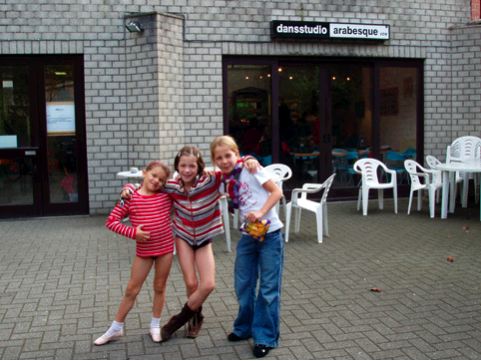

That work of art, where was it shown, and how did you make it?
Corpulent Ballerina (2001) is a large painting (267 x 196 cm) in silvery grey, iridescent acrylic colours on paper. For a long time I wanted to show it in a ballet school; now it happened at the Dansstudio Arabesque (Deurne, Belgium). It was rejected three times before that: at first at the Karlinsky Spektrum in Prague – the dance teacher felt it to be "not adequate". Then it was rejected by the Royal Ballet of Flanders in Antwerp because the artistic director found the project "too experimental for the institution". And finally it was also rejected by the school of the Royal Ballet of Flanders, as "not fit to the programme".
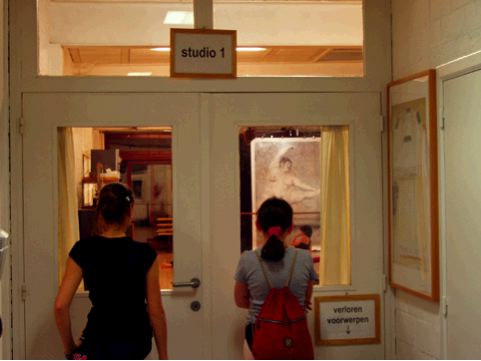
The picture was shown at a place that corresponds perfectly to the ballet pose which appears as a mirroring or accompaniment. The work seems to be the one big shadow of the little dancers. How do you see this arrangement, not to mention the attractive superficial contrast of these opposites in the photographs?
I painted the picture after a black & white photograph I found on a porn web site. I was excited by the photograph at once; for me, it is a picture with a lot of potential. The corpulent woman radiates a gracious energy. She is very elegant… I wanted to confront a high-class dance school with the reality of this painting. I wanted to see the picture "at dance". Mainly, I wanted to observe a practising situation. The painting was hanged in a dance class which is entered for the training only. It is not a place of contemplation but of action.
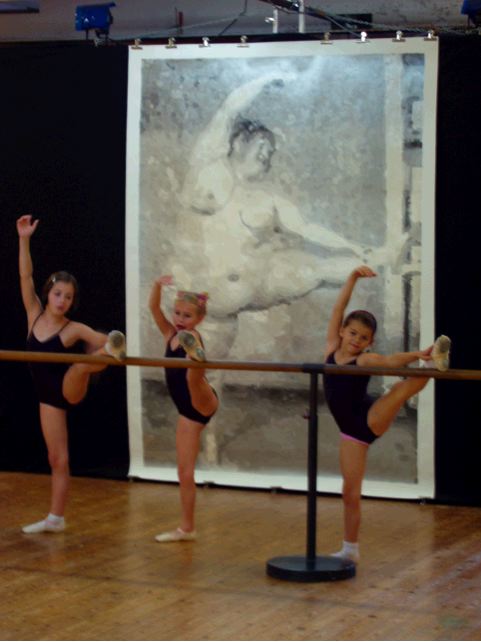

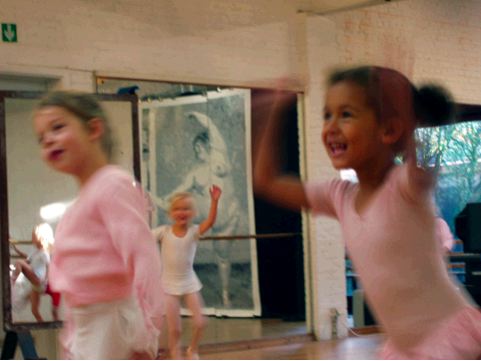
Dancers exercise in continuous rehearsals. That means they have fun and they work during years of effort. Maybe your photographs indicate this, the dense working atmosphere, the common study, with an eye on the goal: becoming fit for the stage, doing a "perfect" performance? Do you see it as a parallel to the visual artist’s work, and did you want to depict this?
I was allowed to accompany and to take photographs in 5 different classes. That were the children's dance class for the 5-years-olds, the classic dance class for the 8-years-olds, the contemporary dance class for the 13-years-olds, classic dance for the 16-years-olds, and classic dance for the 18plus-years-olds... It began with playing and laughing and it ended in military discipline and tears. Yet, this school doesn’t train professional dancers, the people there dance just for fun. But it is serious fun… Ambitious amateurs (in the meaning of "lovers") have always been my favourites, also in the arts. The energy of these "amateurs" is just so much more vivid and touches me much more than the efficiency of "professionals".
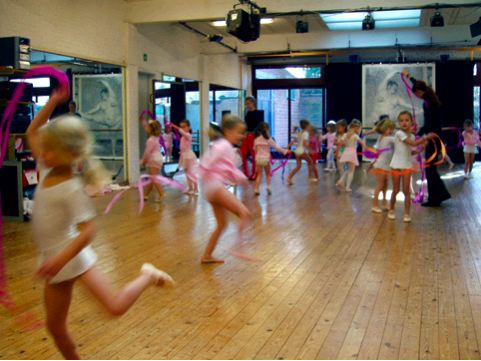
The photographs express a certain complexity: the agile movements of the dancers in coloured dresses, and, behind, the merry, big, silvery ballerina. You also show dancers at the entrance, looking into the classroom from outside. So the gaze is important also during the training?
For me, it was a great luck to assist to the 5 classes. Each time, it was a fantastic spectacle; with live piano music, dance, teaching, and with the picture… A very alive and corporeal situation. The painting was well integrated at once, as an accomplice of the dancers, I think. - Observing and co-ordinating one’s own body with the other ones, the movements, and the rhythm in the space, all that created a special situation, and the painting was a part of this situation. It was more about a perception of the painting as a presence, not so much about a direct looking at, for which the dancers had hardly any time.
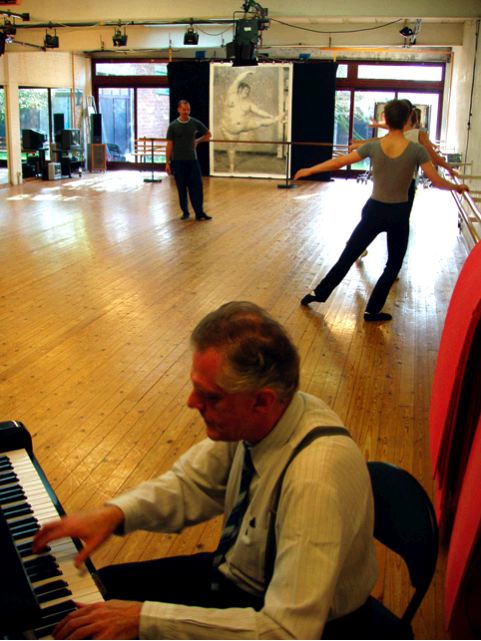

It seems that the dancers had a cheerful, uncomplicated relationship to their work, indeed, and also to the ballerina who is scarcely an example for dancers. How did you experience the acceptance of the picture?
Actually, that cheerful and uncomplicated relationship impressed me much. - There were distinctly different comments, depending mainly on the dancers’ different age. The 5-years-olds had a big controversy at first: if the picture shows a man or a woman… Most of them said it was a fat man! I got the feeling that the 8-years-olds were more interested in the artist than in the work of art – although I heard later on that some of them had asked the teacher (and rightly so) why the woman dances naked. The 13-years-olds were rather cool; but some smiled. That was the contemporary dance class, and they were not so much in a situation of identification with the ballerina. The 16-years-olds were interested but reserved and serious; they had a very strict and professional teacher. The 18plus-years-olds, they gave more feedback and discussion, finally. They were also interested in the artistic process.
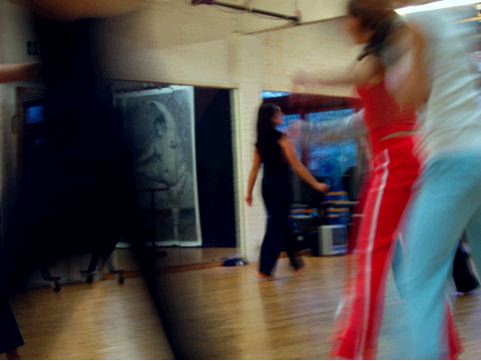
Were, for example, Edgar Degas’ pastel drawings of ballet dancers - behind the stage or dancing - interesting for you as the photographer?
I regard mainly Degas’ sculpture of the "young 14-years-old dancer" as very beautiful. The combination of bronze (the figure) and real cloth (the ballet skirt, the tutu) is particularly stimulating. Sexual stimulation is always a subject concerning dance, and Degas brought that so to say "en passant" into his work. That was an important question for me when I took the photographs and chose them for the documentation – how to deal with this sexuality. As far as the gaze is not voyeuristic, it’s OK, I think. And also the "kind" of sexuality transforms, according to the dancers’ age and gender; there were only 2 or 3 boys, altogether. I found the most difficult to photograph the 5-years-olds because they are so unconscious about their bodies, so the photographer has even more responsibility.
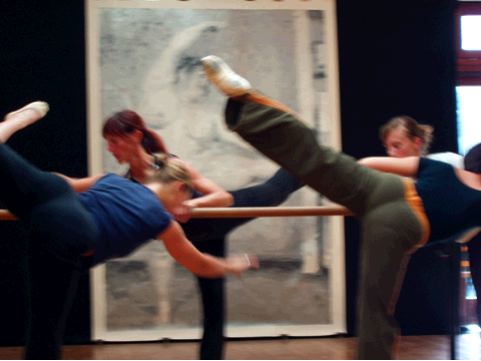
But what about the ballerina? She doesn’t show the continuous development of a body formed by aesthetic exercise, although the pose, the arabesque, seems to be "correct". Nor does she fulfil the tenderness and fine elegance of the Degas girls who seem to be made just right for dancing, including that they offer themselves to the pleasure of the observer’s eye. I mean, your ballerina shows more "face", and all her naked body is, maybe, not so much about the pleasure of being immersed in a working effort (of her own body).
I like her and I am fascinated by her but I am not sure about her actual meaning. For me, she has a very positive meaning, in any case. Maybe it has to do with lust for life, or with freedom and human dignity – or at least with self-esteem? One’s own naked body is "accepted" and radiates a vividness most top-models can only dream of. She has, insofar, something quiet provocative, too...
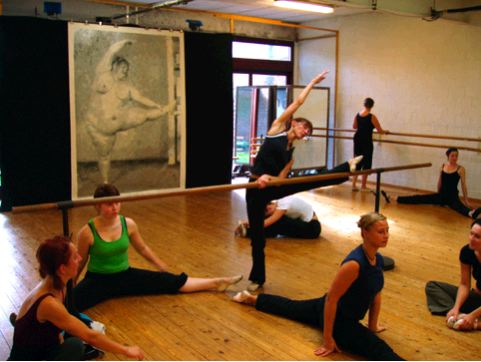
The ballerina’s satisfaction in her fixed pose and the warmness of the dancers, perceptible in their faces, in the colours – is there a common desire? I think of Gustave Courbet’s "faire de l’art vivant", a claim to bring together art and society.
Courbet is a great model for me, as an artist and as a human being. I regard his courage, his engagement, and his sensibility, in art, politics, and also in human concerns, as exemplary. In 150 years some things have changed, but I will always subscribe his claim of "faire de l’art vivant" - to make alive, living art. The question is only how to do it today as an artist.
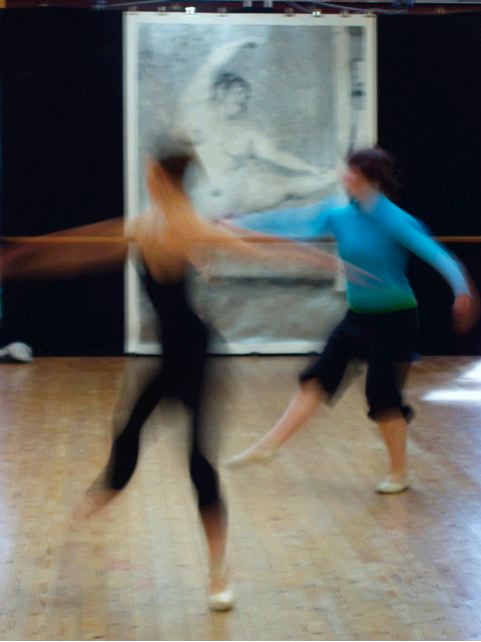
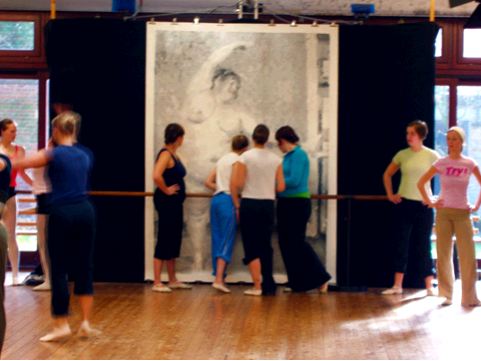
Performing the Re-Institutionalize project, you try to ascribe the function of a showroom to places generally not used for exhibitions. Do you feel that you’ve got it, after this fifth exhibition?
I beg your pardon? It is not just about making a showroom out of an unusual place! It is about offering an alternative to the institutionalisation of art, artists, and the public. The institutionalisation doesn’t only concern the art and the artists, but also the public and the (missing) relationship between art and the public, and between the artist and the public. And there’s a lot of work to do! For sure, I can’t handle that alone; and, paradoxically, above all the institutions themselves should participate in the Re-Institutionalisation in order to realise a paradigm shift – and not only by inviting DJs…
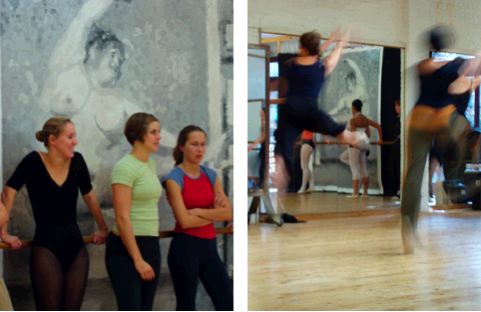
There must be an anthropological idea driving you to collect all these pictures of human beings and to confront them with people outside the art world. Do you know Jan Hoet’s project Chambre d’Amis of the 80s, or the idea of the Musée de l’Homme?
Yes, especially Jean Rouch and his films and photographs are important. He was a great fan and a key figure of the Musée de l’Homme – the crucially important art institution in Europe in the 50s, a trigger of the Nouvelle Vague generation! Jan Hoet’s project Chambre d’Amis (the show took place in private flats) is a good example of Re-Institutionalisation! It became a legend and it becomes only better with time, like a good red wine… It’s a pity that the art world cultivates so much exotism but invests very little work in anthropology. I’m not an anthropologist, but there is for sure an anthropological idea in my artistic research.
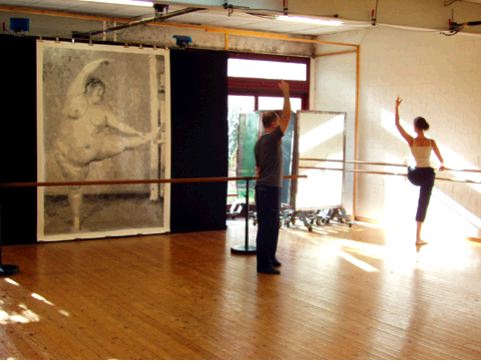
Is authenticity important for you?
Authenticity is always an important criterion for me. Yet, authenticity is no synonym for martyrium or for good intentions.
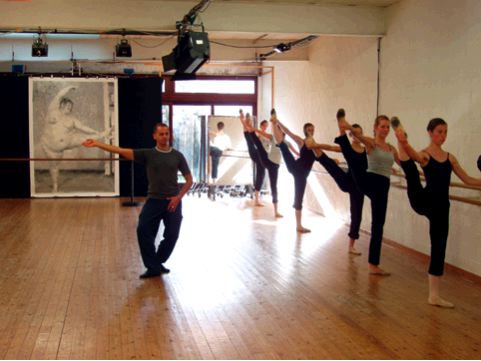
One could understand your Re-Institutionalize project as a mapping of your own "being an artist"…how do you think about that?
Actually, it is my most important project up to now. Also because it's an impulse for other, different projects. Right now, it constitutes the center of my artistic research and it reflects my "being an artist". First and foremost, it helps to define my "being an artist" in praxis and theory.
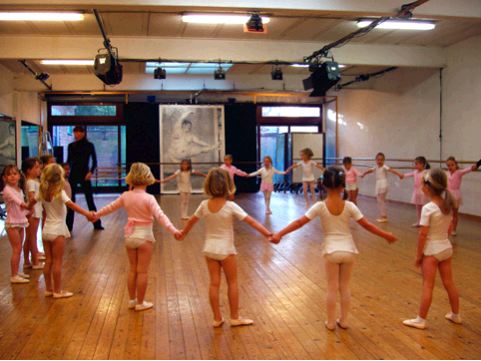
Is it hard for an artist to work alone?
Yes – Yet I am not working alone – You’re there, and some other friends, too. And the number is growing slowly, so there’s no reason to cry but only good reasons to work more.
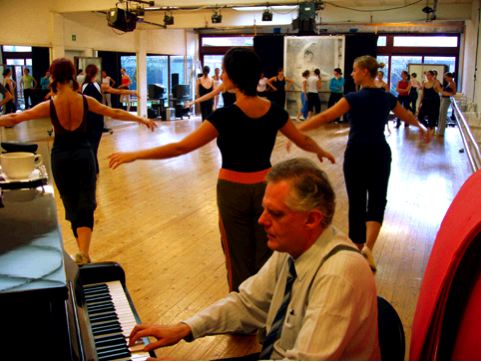
Do you see the project rather as a provocation, or does it work independently from a critique of established institutions? As soon as ballet schools become showrooms, are we arriving in the art world prophesied by Andy Warhol, and is there any artistic problem, then?
I hope one can see the project as a functioning model. Actually, the problem is that Warhol’s prophecies are already reality, and that causes a lot of new problems. Yet, at the end, there are no problems, but only new stimulation to make art!
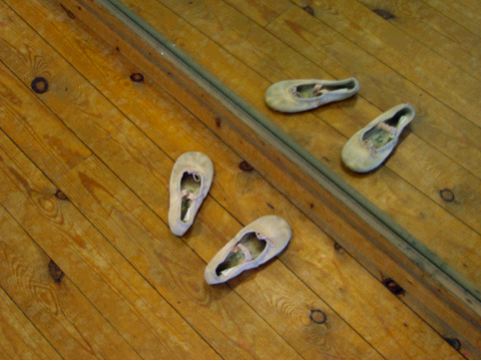
Interview: Heike Wetzig & Kristofer Paetau, november 2004
Re-Institutionalize # 05: Dansstudio Arabesque
Thank you: Dansstudio Arabesque http://studio-arabesque.com